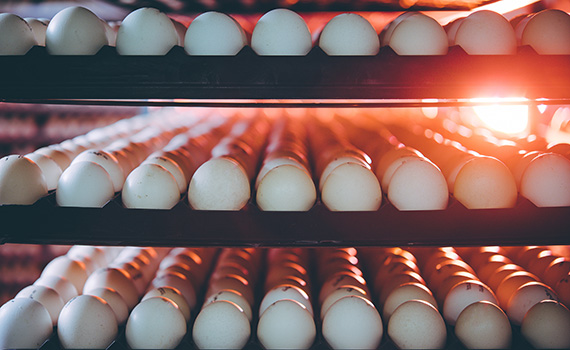Hatchery details key to maximizing chick performance, expert says
A back-to-basics approach toward managing, handling and storing eggs can help maximize the quality and hatchability of chicks being produced for broiler flocks, according to an industry expert.
Scott Martin, an independent poultry consultant specializing in hatcheries, said it can be tempting to set every egg delivered to a hatchery.
But if bird performance and farm profitability are to be optimized, staff need to make sure that only the best eggs make it to the hatcher — even if that means rejecting more eggs than they’re used to.
“We need to remember we’re in the meat-production business, not the egg business, and we need to produce the best quality chick we can for the customer,” Martin told delegates at an American College of Poultry Veterinarians workshop.
To maximize performance, he said producers need to go back to basics and look at practical measures that enable consistent chick production — starting with egg collection and storage.
While daily delivery to the hatchery offers the highest level of chick consistency, most operations collect and deliver eggs to the hatcher twice a week, operating on a 3- or 4-day pick up, Martin said.
That means farms need to be able to store eggs properly, ensuring a gradual cool-down of the eggs once they are laid and proper ventilation to reduce condensation build-up.
“Storage duration, temperature and relative humidity will all affect the hatch,” he explained. “At lay, the egg’s temperature is about 104° F, and it should slowly come down to a final resting temperature of 68° F.
“Allowing it to fluctuate at any time can cause embryonic mortality in the first week of incubation.”
Similarly, storing eggs for too long will also impact hatchability, with batches stored for longer than 6 days likely to see reduced hatching rates.
Egg flows
Monitoring temperatures during transportation is another important factor, as eggs should not be warmed prematurely before they reach the hatcher, Martin explained.
“Typically, delivery trucks are refrigerated, but doors can be left open during collection and drop-offs, [meaning] we’re taking chances on fluctuating temperatures,” he said. “A plastic curtain [at the back of the van] can retain temperatures and keep things consistent.”
On arrival at the hatchery, eggs should ideally be transferred to a temperature-controlled egg holding room. If they are delivered to an unventilated receiving room they should be moved out of it as quickly as possible and never left there overnight, Martin added.
When it comes to setting the eggs, pre-warming rooms should have good ventilation to allow air to circulate.
“Often people will leave eggs outside of the hallway in front of incubators, and that’s fine if that’s all [the space] you have,” he said. “But regardless of where the eggs are pre-warmed, we need circulation… and we need to keep the temperature correct.”
Checking egg quality
Another important factor in egg management is the age of the flock, as shell density, egg size and hatchability can reduce as bird fertility drops.
“We need to be especially careful with older-flock eggs as we typically get more rotten eggs due to thinner shells and larger pores,” Martin said. “Transfer eggs from older flocks last, prevent them from sweating and don’t set ones that are dirty.”
While many hatcheries carry out rigorous egg assessments, failure to check batches for hairline cracks, round eggs or dirty eggs can lead to serious problems in hatchability.
“I’ve heard lots of people say dirty or bloodstained eggs will be fine, but you don’t want to take the chance of setting them,” Martin said. “If you set them, you know the consequence: You won’t get the same quality.”
Similarly with floor eggs, there’s no way to be certain that eggs are not contaminated — even if they’ve been rinsed off, he added.
“People might say they marked the dirty eggs and set them at the bottom [of the hatcher]. But they could be contaminated, and if they explode the bacteria spreads through the incubator.
“Some people even have a separate incubator for dirty eggs, but we really should be fixing problems at the root, not making concessions and changing hatchery procedures because of them.”
Ultimately, Martin said it’s important egg producers and hatchery facilities do the best they can with the tools they have and avoid complacency when it comes to monitoring quality.
“We would like to set every egg we produce, but that doesn’t always bring the best outcome.
“We need to realize if we have good quality going in, we get good quality going out. But you can’t take a bad egg and make it good.”
Posted on April 1, 2021














